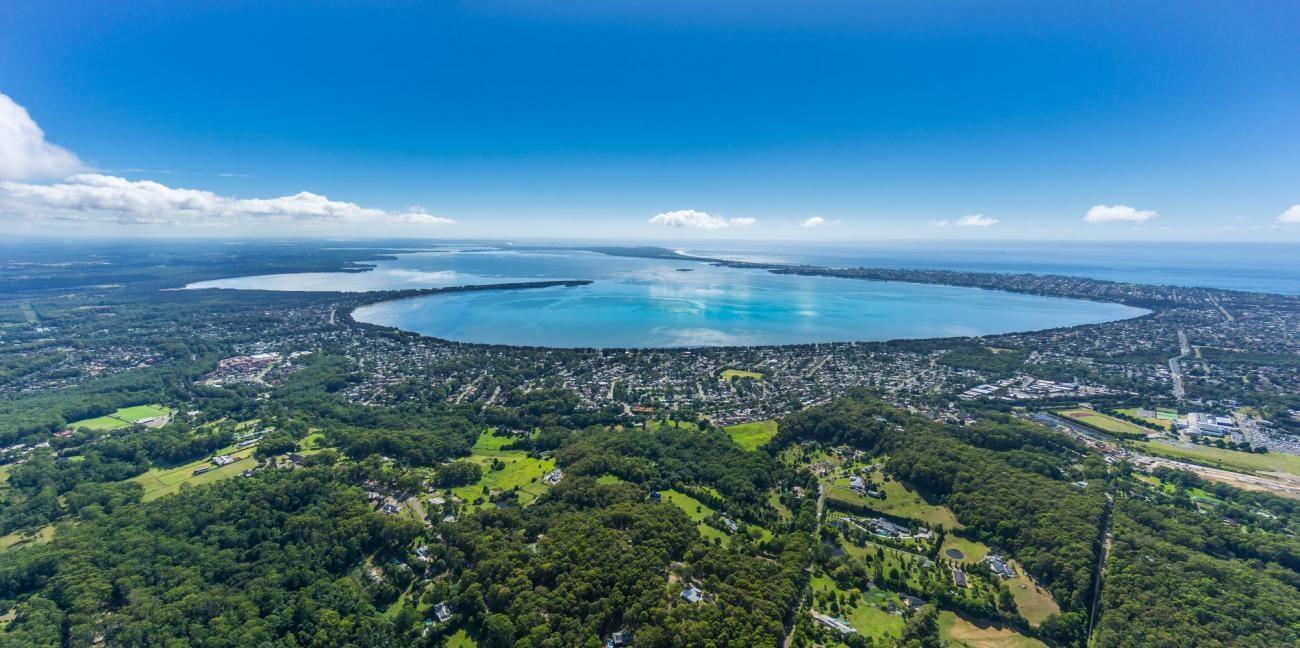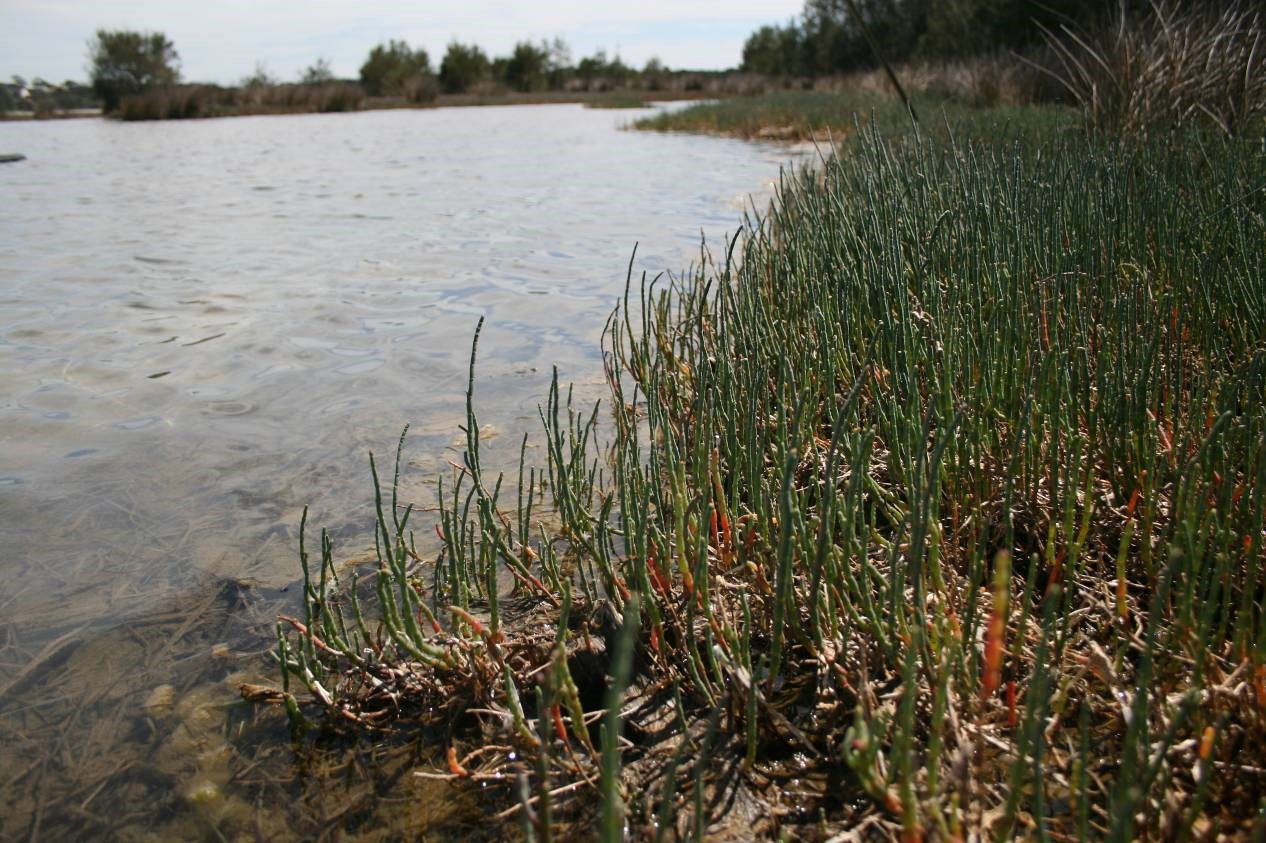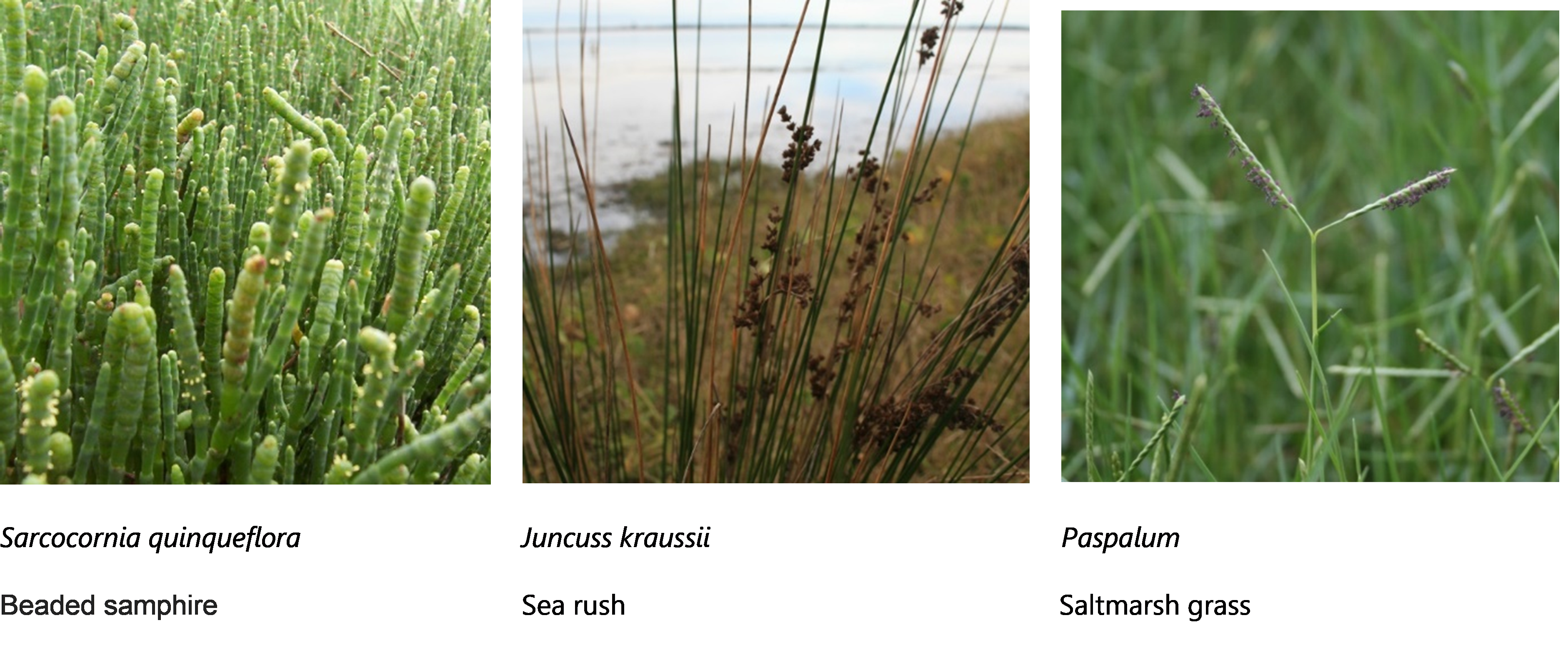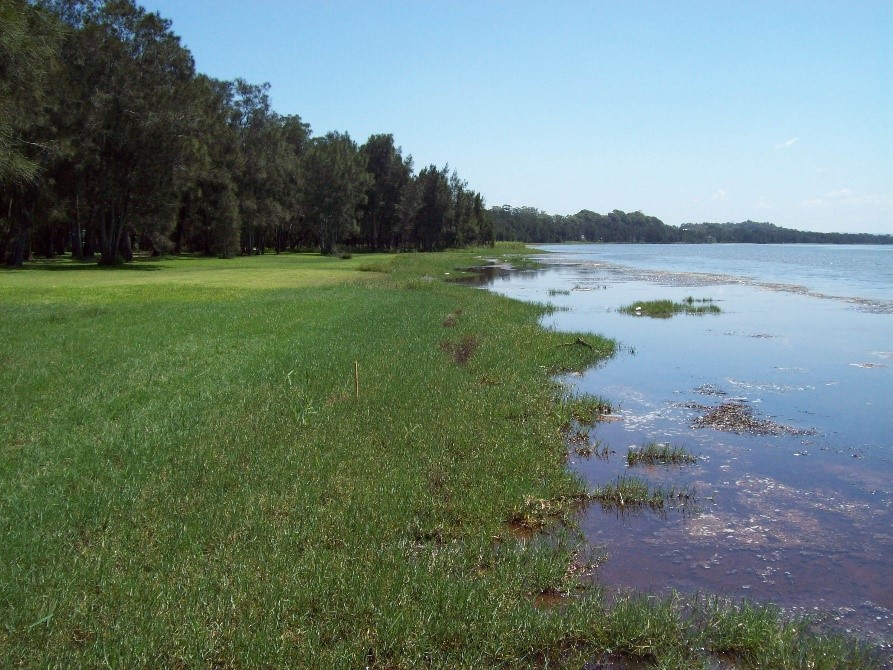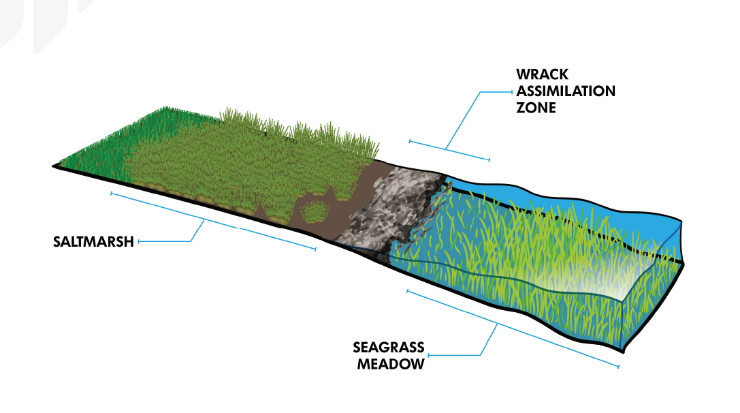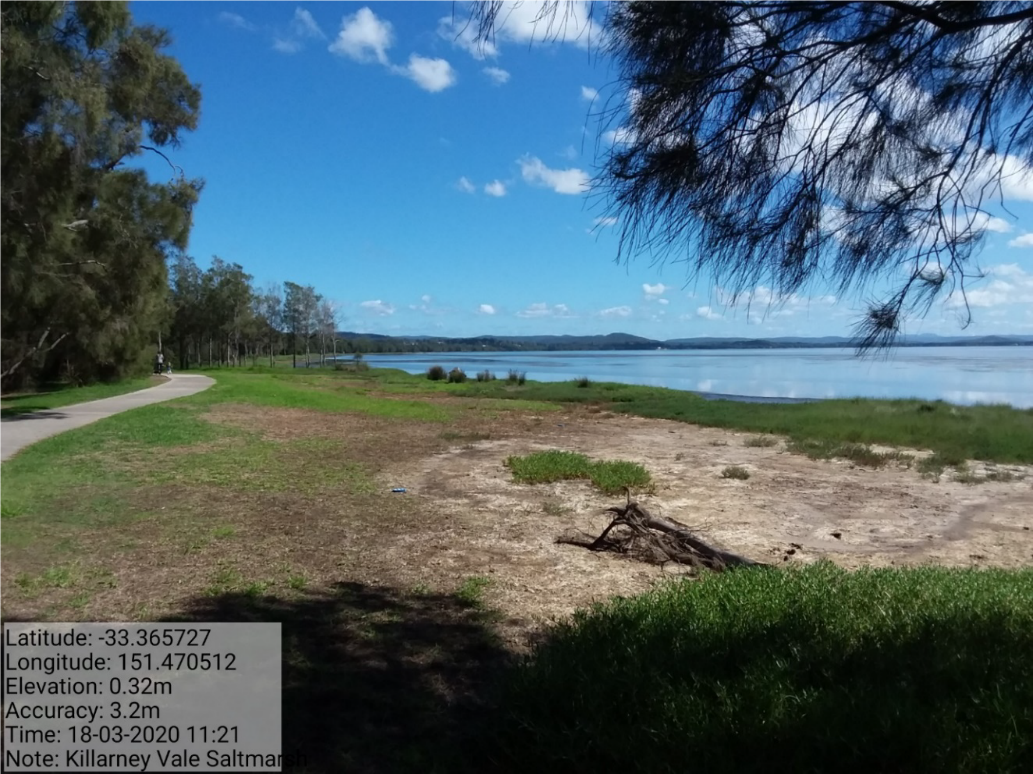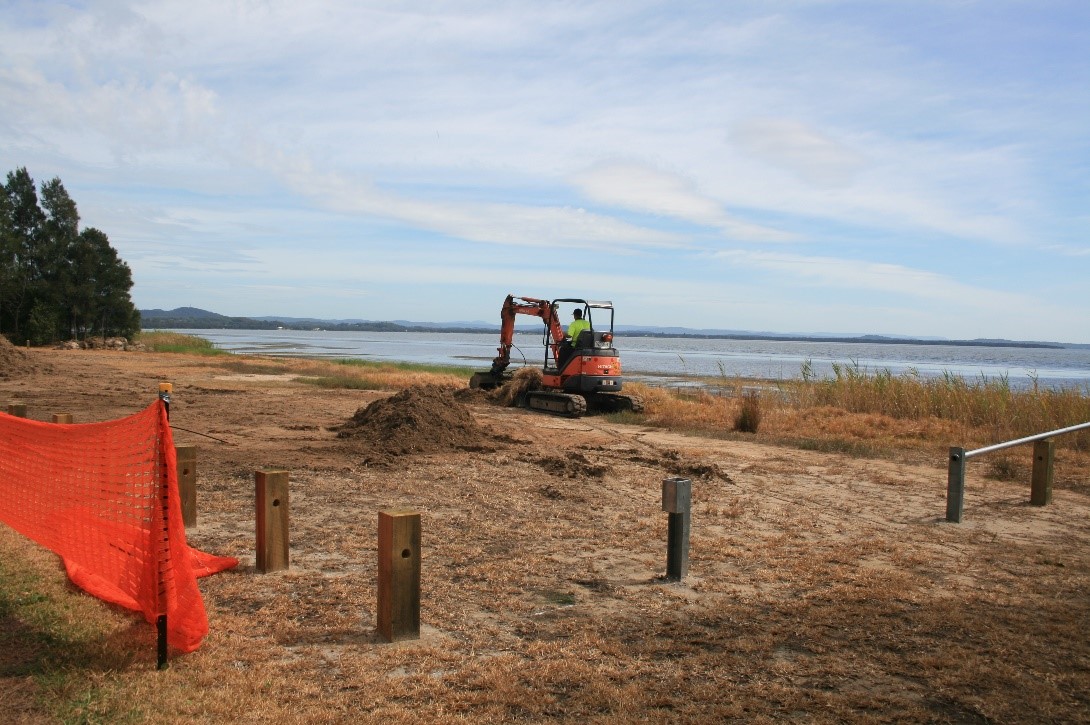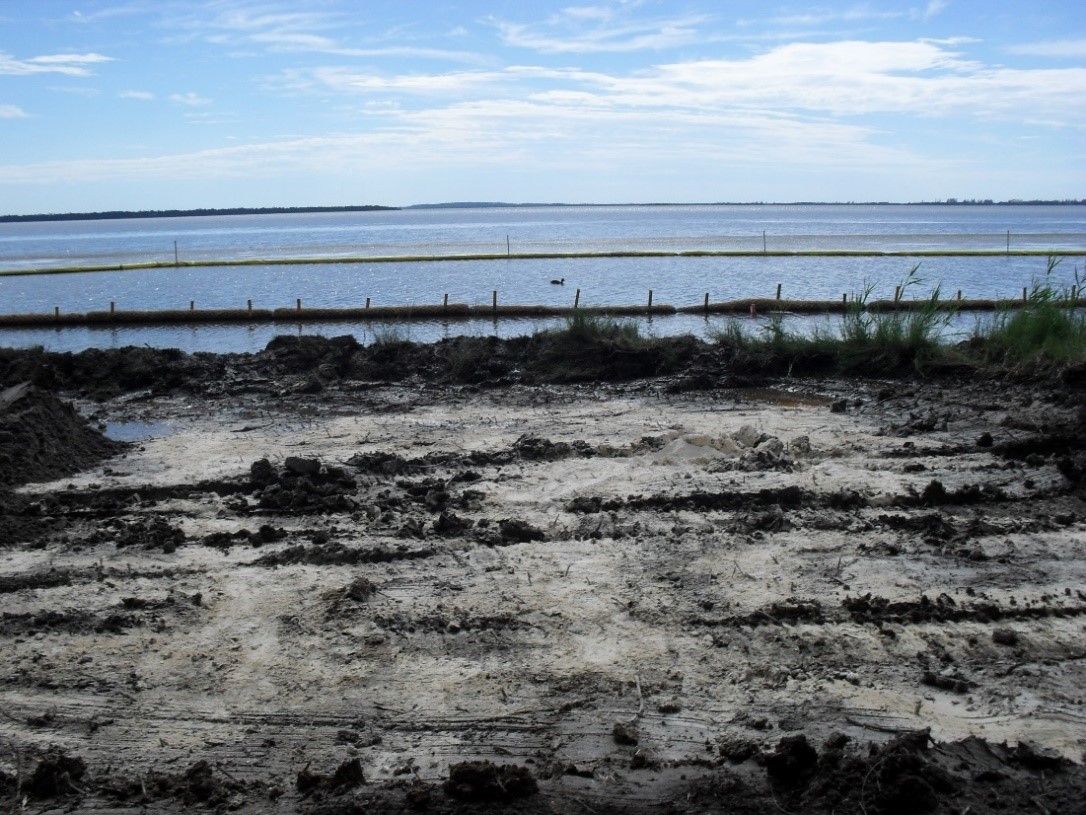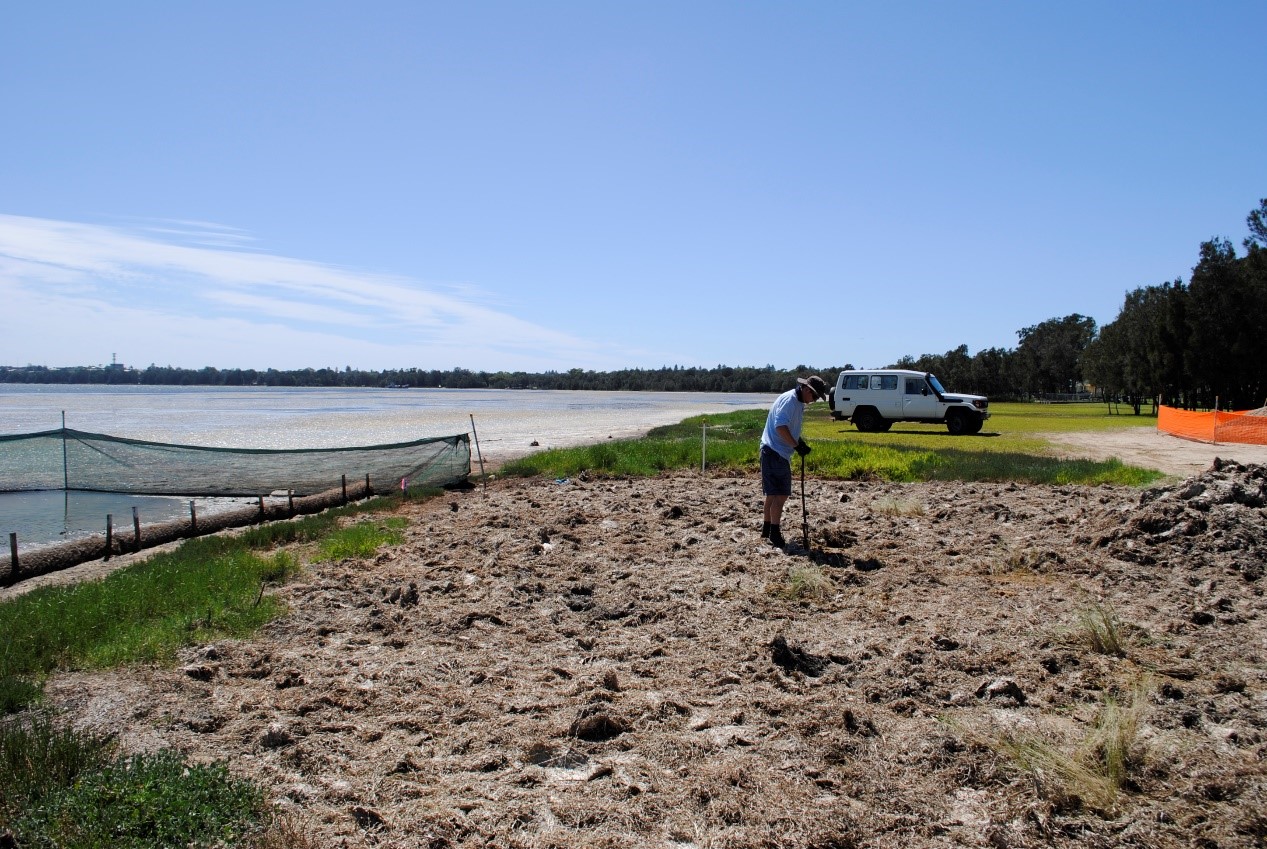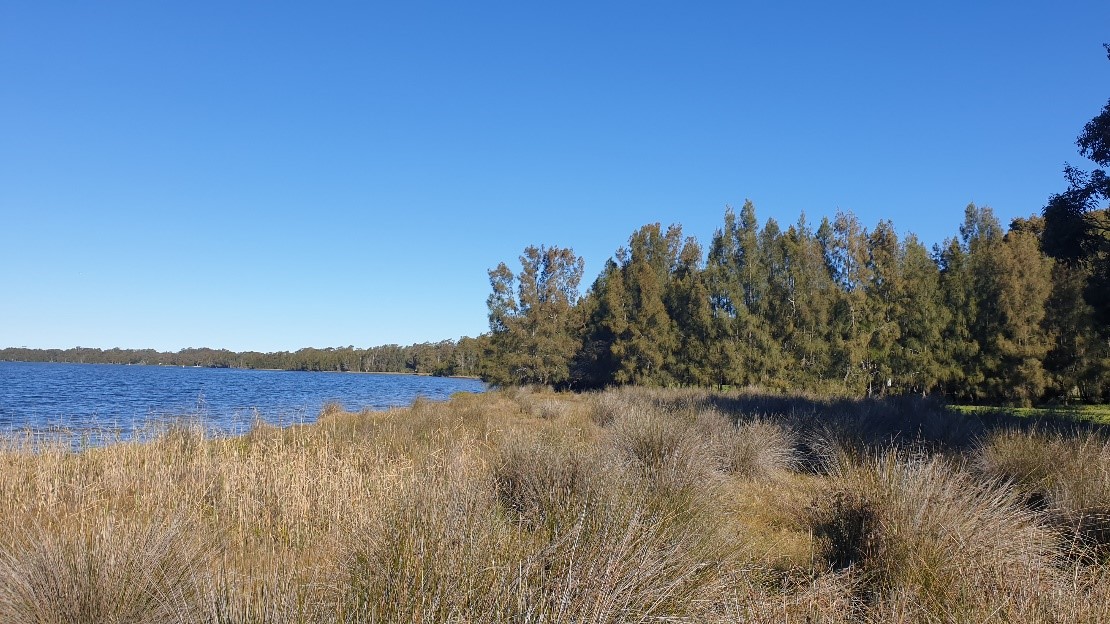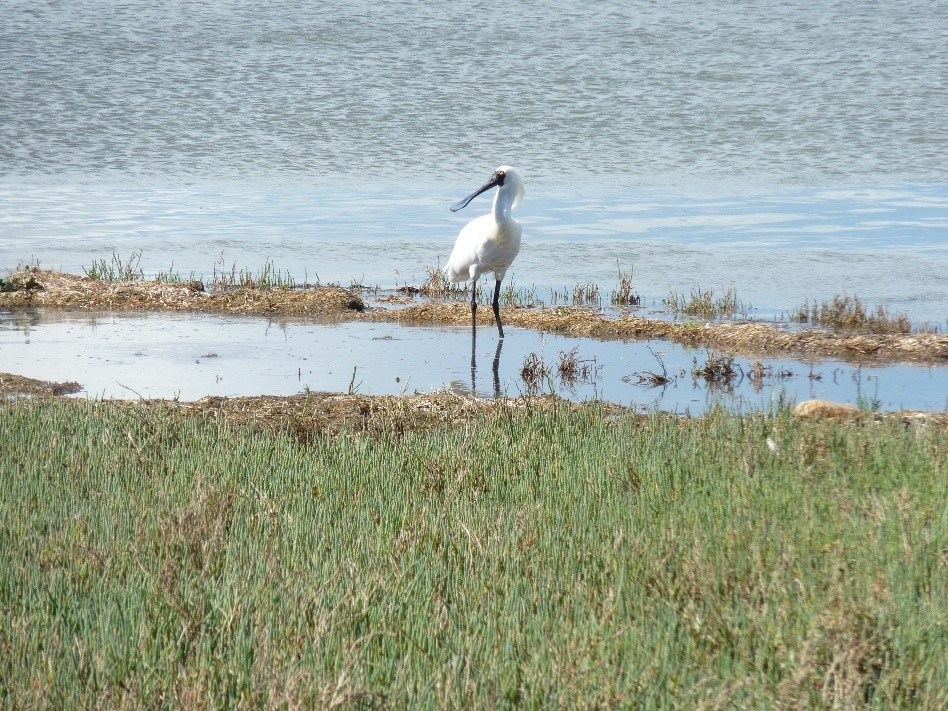In 2020, Central Coast Council was awarded a one-off non-competitive grant to the value of $4.7 million through the Australian Government’s Environment Restoration Fund. The Tuggerah Lakes Estuary and Catchment Ecological Health Project includes a range of activities around the foreshores of Tuggerah Lakes and within sensitive wetlands and bushland sites fringing the estuary. The project will be implemented over a 3-year period until March 2023.
The project aims to improve the ecological health of Tuggerah Lakes, focusing on storm water improvement, water quality, riparian and wetland ecosystems, bank and foreshore stabilisation, construction and restoration of saltmarsh habitat, wetland management, erosion control and research studies. The activities build on others delivered for Tuggerah Lakes, align with the objectives of the grant and the Tuggerah Lakes Estuary Management Plan and will contribute to a healthier and more vibrant estuary that we can all enjoy.
These environmental improvement activities are taking place at significant ecological sites located at Budgewoi, Buff Point, Tacoma, Lake Munmorah, Tumbi Umbi, Blue Haven, Killarney Vale, Rocky Point and San Remo. Council is working in partnership with technical experts, consultants and industry leaders to ensure that the highest standards of ecological outcomes are delivered for the environment, estuary and community long into the future.
How can you help?
The health and condition of the Tuggerah Lakes and surrounding wetland environments rely on the health of the upper catchment areas. Any rubbish, sediment or chemicals that enter these river systems or finds its way into the stormwater will end up in these fragile ecological areas.
Our daily actions can impact the health of our waterways and environment not only where we live or work but all throughout the catchment and even to the ocean. By adopting environmentally friendly practices, such as not mowing all the way to the shoreline, always walking or riding on paths provided, keeping dogs on leashes and in designated areas, picking up your dog’s droppings and disposing of rubbish in bins we can all contribute to a better future for these important environmental areas.
It is important to note that looking after the environment is not just for greenies... we all rely on waterways for one thing or another, be it the water we drink or the air we breathe, our favourite fishing or birdwatching spot or a nice view while we ride along the shared pathways. Healthy waterways are a large part of why we live here on the Coast, and we can all contribute to making it a better place.
The Tuggerah Lakes Estuary and Catchment Ecological Health Project will be taking place over the next three years. During this time, we will be consulting with the community to find out how you use specific foreshore areas and what you value about your waterways.
Council will continue to share our progress through information shared on this page and on the interactive map. What we hear will be considered when it comes to implementing these works.
The community are invited to:
- Take our online survey
- View our interactive map of the works taking place
- Read our frequently asked questions
To find out more about this project and assist providing feedback on the proposed works you can:
- View the Frequently Asked Questions below.
- See what works are in the planning stage and consultation stage as part of this process on the Social Pinpoint Map
- View the key documents associated with the Tuggerah Lakes Estuary and Catchment Ecological Health Project including project descriptions and educational material.
This project received grant funding from the Australian Government.
Frequently asked questions
What is coastal saltmarsh?
Coastal saltmarsh is a very fragile plant community that only grows within a limited elevation at the water’s edge. Saltmarsh is a salt-tolerant mostly treeless floral plant community consisting of low-lying succulents, rushes and sedges. It grows along gently sloped foreshores where the soil moisture and salinity is maintained by both surface water and groundwater.
Why does saltmarsh grow on the foreshore?
Coastal saltmarsh is a plant community that is adapted to environments exposed to salty water. These plants grow in a narrow band around our estuaries where elevation, soil moisture, soil salinity and surface water salinity are right, and the plants are infrequently covered in water. As the average water level changes, falling during drought and rising during floods and as sea-levels rise, the boundaries of saltmarsh can change.
Where can it be found on the Central Coast?
Coastal saltmarsh grows around our lakes, estuaries and lagoons. Around Tuggerah Lakes it is common along the undeveloped shorelines, usually found right on the water’s edge. Around Brisbane Water, the saltmarsh often sits behind a barrier of mangroves where it is intermittently inundated with saltwater.
Figure 1. Saltmarsh growing around the lake edge
Figure 2. A few of the many saltmarsh species found around Tuggerah Lakes.
How does saltmarsh improve water quality?
Saltmarsh vegetation filters and absorbs excess nutrients, sediments and other suspended pollution from the land and the lake. Foreshore vegetation such as saltmarsh is a vital component in the lake systems natural cleaning process, acting like a comb/ net catching floating decaying wrack when the lake level starts to recede after localised flooding. This natural process is a part of the lakes self-cleaning function that has existed before encroachment and development around the foreshore.
What other benefits does coastal saltmarsh have?
Saltmarsh serves many important ecological roles. It:
- provides an important habitat and food for fishes, birds, insects and crustaceans to nest breed and eat (subsequently allowing for bird watching and fishing)
- buffers against wind and water erosion, stabilising the foreshore and decreasing sediment entering the lake that makes it murky
- manages seagrass wrack by catching it, allowing it to dry and naturally breakdown so becomes part of the foreshore soil
- filters runoff from the foreshore and catchment stormwater that contain excess nutrients from lawn clippings, soaps and fertilisers
- captures atmospheric carbon created from burning fossil fuels to create power, which is stored in the plant tissue and soil and decreases Green House Gases in the atmosphere, defined as a carbon sink.
How has saltmarsh changed on the Central Coast?
Over the past 10 years we have seen saltmarsh slowly move landward and expand into new areas it didn’t exist during the millennium drought. This is a natural process that is good for estuary health and a recovery from previous losses. Often saltmarsh will naturally establish in areas where the correct conditions are present, however, it is possible to recreate these conditions through a process we call active saltmarsh rehabilitation. This process helps saltmarsh recover faster than it normally would and helps to bring all the values of coastal saltmarsh back to our foreshores.
Pre-European settlement, the foreshores of Tuggerah Lakes and Brisbane Water were naturally lined with coastal saltmarsh and Swamp Oaks (Casuarinas) and for the latter, mangroves. With the increase in population and the desire to be along the waters edge, the foreshores have been built over, which has had significant, ongoing negative impacts on estuary health. It is estimated that up to 80% of the saltmarsh that was once found on the shorelines of Tuggerah Lakes has been lost as a result of clearing, development and shoreline modification (BioAnalysis, 2006).
Figure 3. Natural slope creating a perfect environment for saltmarsh to grow.
What is an ICOLL?
An ICOLL is an 'Intermittently Closed or Open Lake or Lagoon'. Tuggerah Lakes is an ICOLL, that naturally opens and closes depending on a range of environmental factors such as seasonal and climatic patterns, floods, drought, storm events and wind. Human intervention can also play a part in controlling opening and closing. The Central Coast’s coastal lagoons including Wamberal, Terrigal, Avoca and Cockrone Lagoons are also ICOLLs. As these dynamic ICOLLs open, close and change, the temperature, salinity and water chemistry also changes throughout the estuary, which provides a wide range of conditions to support a wide range of life.
How can I (resident and community) help protect Tuggerah Lakes ICOLL?
- Don’t mow to the shoreline.
- Always walk or ride on paths provided.
- Keep dogs on leashes and in designated areas.
- Pick up your dog’s droppings and dispose of correctly.
- Dispose of rubbish in bins.
- Leave the shoreline in its natural state by not constructing unauthorised wharves, jetties, walls or boat ramps.
- Launch boats from public boat ramps only.
- Store boats and trailers away from saltmarsh areas.
- Keep grass clippings out of waterways by composting or using green waste collection bins.
- Report activities harming saltmarsh by contacting your nearest NSW DPI Fisheries Office or Fishers Watch Hotline on 1800 043 536 or the OEH Environment Hotline on 131 555.
What is ‘foreshore reclamation’ and how does it impact saltmarsh?
During the 80’s, the estuary was in a particularly bad state, and the government at the time implemented the Lakes Restoration Project in the early 90’s. Part of this included foreshore reclamation. Reclamation included dredging up the bed of the lake, placing the dredge spoil along the old shoreline to build out into the water (around 50m) and then capping the highly organic material with sand to recreate “sandy beaches”. The environmental impacts of this process were poorly understood, and we are still seeing negative ripple effects to this day. Amongst other things, clearing and modification of the foreshore, not just in Tuggerah Lakes but throughout NSW has hugely decreased the presence of coastal saltmarsh and Swamp Oak Forest communities to the point of requiring legal protection as Endangered Ecological Communities.
These days we recognise the importance of coastal saltmarsh to a healthy estuary, so are working on bringing it back where we can. The projects, known as saltmarsh rehabilitation aim to preserve the recreational use for the foreshore zones whilst also recreating appropriate environmental conditions for saltmarsh to grow
What is an Endangered Ecological Community?
An Endangered Ecological Community is a naturally occurring group of native plants and animals that face a high risk of extinction in Australia in the immediate future.
Coastal Saltmarsh is a very fragile community and only grows within a limited elevation. Council has a responsibility to protect these areas by law. It is listed as an Endangered Ecological Community (EEC) under the Biodiversity Conservation Act 2016 (NSW).
Saltmarshes are a diminishing habitat in the coastal biosphere of Australia. New South Wales has the least amount of coastal saltmarsh remaining of any state. In recognition of the decline and the importance of saltmarsh in NSW, it has been listed as an Endangered Ecological Community. The EEC Coastal Saltmarsh is protected from harm by both State and Federal law through three pieces of legislation; the Biodiversity Conservation Act 2016, the Fisheries Management Act 1994 and the Environment Protection and Biodiversity Conservation Act 1999.
Why is saltmarsh protected in the Tuggerah Lakes?
As more people seek to live in the coastal zone and enjoy the surrounding natural waterways, the risk of further decline in saltmarsh increases. Greater pressure is placed on saltmarsh communities from both direct impacts (reclamation for development, mowing and off-road vehicle use) and indirect impacts (e.g. changes in natural tidal flow characteristics, pollution, weed invasion and sea-level rise). Large amounts of coastal saltmarsh were removed or damaged while the Central Coast was developing from the 1970s-1990s, leaving small isolated patches of saltmarsh vulnerable to more threats.
Threats to saltmarsh include:
- trampling and water-craft access
- use of off-road vehicles
- dumping of rubbish/waste and pollution
- mowing and gardening
- weed invasion
- illegal commercial harvesting for human consumption
- reclamation for development and foreshore protection works built on top of saltmarsh habitat
- climate change, sea-level rise and mangrove incursion.
How does saltmarsh help manage seagrass wrack?
When the foreshore is gently sloped and covered in saltmarsh, it protects the lake edge from wind-driven wave energy and swash from boats, acting as a physical barrier and stabilising the foreshore edge with its root system. The gentle slope allows detached seagrass wrack to wash up onto the shore where it dries out and doesn’t smell.
Foreshore vegetation such as saltmarsh is a vital component in the lake systems natural cleaning process, acting like comb/net for catching floating decaying wrack when the lake level starts to recede after localised flooding. This natural process is a part of the lakes self-cleaning function that existed before the foreshore was developed for living and recreational purposes.
What is saltmarsh rehabilitation?
Saltmarsh rehabilitation is the action of restoring/repairing saltmarsh communities that have been damaged or are in a poor condition.
Council has to date restored more than 29 hectares of saltmarsh on the Tuggerah Lakes foreshore. Two different methods have been applied to achieve this outcome – passive and active rehabilitation.
Passive saltmarsh rehabilitation supports existing saltmarsh communities to regenerate and expand into surrounding areas to a point where they can sustain themselves with little intervention.
Passive saltmarsh rehabilitation includes a range of activities such as:
- stopping damaging activities (e.g. vehicles, mowing, trampling)
- installation of no-mow markers
- tilling surface to remove compaction where required
- transplanting of saltmarsh species
- weed control
- mulching with locally sourced seagrass wrack.
A saltmarsh that requires serious intervention is referred to as active saltmarsh rehabilitation and can include:
- installation of fish-friendly site bunding
- regrading of the site or adding fill to establish an appropriate slope and allow for low, mid and high marsh species to establish
- soil conditioning
- stabilisation of new surface
- revegetation and transplanting with local saltmarsh species
- mulching with seagrass wrack
- pinning mulch in place with open weave biodegradable matting.
Figure 5. Passive saltmarsh rehabilitation - before
Figure 6. Passive saltmarsh rehabilitation - after
Figure 7. Active saltmarsh rehabilitation - construction stage to create appropriate slope by regrading foreshore
Figure 8. Active saltmarsh rehabilitation - regraded foreshore with sediment fencing to avoid impacting water quality
Figure 9. Active saltmarsh rehabilitation - mulching and planting site with local saltmarsh species
Figure 10. Active saltmarsh rehabilitation - successful saltmarsh site that self-maintains
Why are we focusing on saltmarsh rehabilitation?
Council’s Estuary Management Team manages and rehabilitates environmental areas where land and water intersect (riparian zones). Our rehabilitation projects focus on improving the water quality and ecological health of the Tuggerah Lakes catchment with emphasis on the lake water quality.
Along with other rehabilitation projects, saltmarsh rehabilitation is very important due to the range of benefits outlined above, and its national importance.
Many of the saltmarsh rehabilitation projects are funded through grant programs due to the national environmental importance of coastal saltmarsh.
How does saltmarsh help manage acid sulphate soils?
Acid sulfate soils are found in every coastal estuary in NSW. Left undisturbed, acid sulfate soils do not present risk. But when exposed to air, the iron sulfides they contain react with oxygen to create sulfuric acid. The acid and released metals can have many harmful effects including; damaging waterways, killing aquatic life, killing plants and causing toxic water and dust that can irritate skin and eyes. Acid sulphate soils were undoubtedly disturbed from dredging the Tuggerah Lakes in the Lakes Restoration Project of the early 90’s. Saltmarsh helps to protect the lake’s foreshores from erosion and prevents the potential exposure of acid sulphate soils.
What is the difference between saltmarsh and grass growing at the water's edge?
Most of our foreshores are now lined with exotic grass species. Exotic grasses can easily grow on top of nearly any earth material and easily take over native species habitats, making it a weed. The shallow roots do not stabilise the foreshore edge, which means the earth material can be easily eroded by wave energy, destroying the foreshore ecosystem, and leaves wrack stuck in the shallow water unable to dry out.
Saltmarsh thrives in saline foreshore environments and stabilises the foreshore by creating a physical armour from wave energy, securing soil to the foreshore with the root system, and increasing soil quality making it more resilient to erosional forces. Saltmarsh also creates an ecosystem that provides nutrients and shelter to fauna, crustaceans and fishes.
Does saltmarsh impact flood levels?
No. A naturally sloped and/or vegetated foreshore has no impact on increased water levels or flooding from storm events. Saltmarsh is a group of low growing plants, that do not affect floodwater movement, and like other grassy vegetation, will lay over when fast water flows past.
What animals are dependent on saltmarsh ecosystems in the Tuggerah Lakes?
Many species of animals use saltmarsh as habitat for foraging, breeding and roosting. These animals include birds, insects, mammals, and aquatic fauna such as crabs, molluscs and fish. Many of these species breed and live primarily or exclusively in the saltmarsh. Importantly, a range of migratory birds visit Tuggerah Lakes each year, feasting in our saltmarsh areas, and travel across the globe to reach our shores (e.g. Bar Tailed Godwit, Little Tern).
How does saltmarsh help with managing climate change?
Saltmarsh is a carbon sink, along with seagrass and mangroves, which sequester and store large quantities of carbon both in plants and in the sediment below them (known as ‘blue carbon’). In some cases, this carbon has been stored for thousands of years. Protection of saltmarsh ensures that this accumulated carbon is not released as carbon dioxide into the atmosphere, thereby reducing the effects of climate change.
What is a Gross Pollutant Trap (GPT)?
A Gross Pollutant Trap, or GPT is a stormwater treatment device that is typically constructed at the end of drainage lines. These GPT’s trap pollutants such as rubbish, vegetation, sediments and other harmful contaminants that enter our stormwater.
Council maintains these GPTs on a regular schedule where they are serviced, cleaned and the trapped material is disposed of in accordance with EPA guidelines.
Are these projects in jeopardy as a result of Council’s current financial crisis?
No. These works are part of the Tuggerah Lakes estuary and catchment ecological health project, which is fully funded by the Environment Restoration Fund grant, managed by The Department of Industry, Science, Energy and Resources on behalf of the Department of Agriculture, Water and the Environment.
